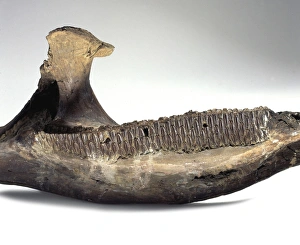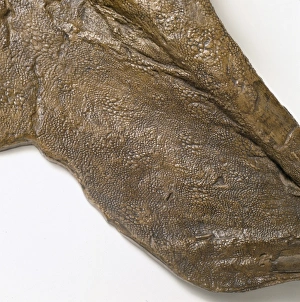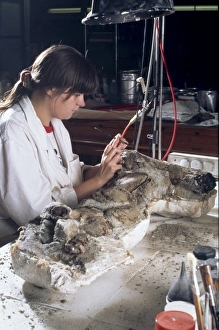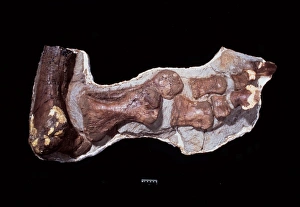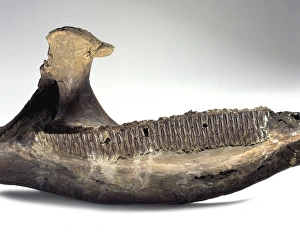Anatotitan Collection
Anatotitan, also known as Edmontosaurus, was a fascinating dinosaur that roamed the Earth millions of years ago
All Professionally Made to Order for Quick Shipping
Anatotitan, also known as Edmontosaurus, was a fascinating dinosaur that roamed the Earth millions of years ago. With its impressive jaw structure, like the one seen in the C016 / 5696 fossil, Anatotitan was well-equipped to munch on plants and vegetation. Belonging to the hadrosaurid family, this herbivorous giant possessed a long and sturdy body with powerful limbs. The name "Edmontosaurus" pays homage to Edmonton Formation in Alberta, Canada where many fossils have been discovered. These findings have provided scientists with valuable insights into the anatomy and behavior of this magnificent creature. One striking feature is its unique skin texture. Fossilized impressions reveal a pebbly pattern covering its body surface – an adaptation that likely helped it regulate temperature or provide camouflage. Studying an intact skeleton of Edmontosaurus regalis has allowed paleontologists to reconstruct its entire frame accurately. The laboratory work involved meticulous examination and analysis of each bone fragment to piece together this ancient puzzle. Interestingly, researchers have also focused on studying other parts of Anatotitan's anatomy such as its ankle and foot structures. By examining these intricate details, they gain further understanding about how this massive creature moved and interacted with its environment. Although not directly related but worth mentioning is another famous dinosaur called Pachycephalosaurus which shared habitats with Anatotitan during their time on Earth. This dome-headed dinosaur adds more intrigue to the prehistoric ecosystem where these giants coexisted. Overall, Anatotitan continues to captivate our imagination as we uncover more information about this incredible species through ongoing research efforts. Its robust jaw, distinct skin patterns, complete skeletons found through extensive laboratory work - all contribute towards painting a vivid picture of what life was like for these majestic creatures in our planet's distant past.

